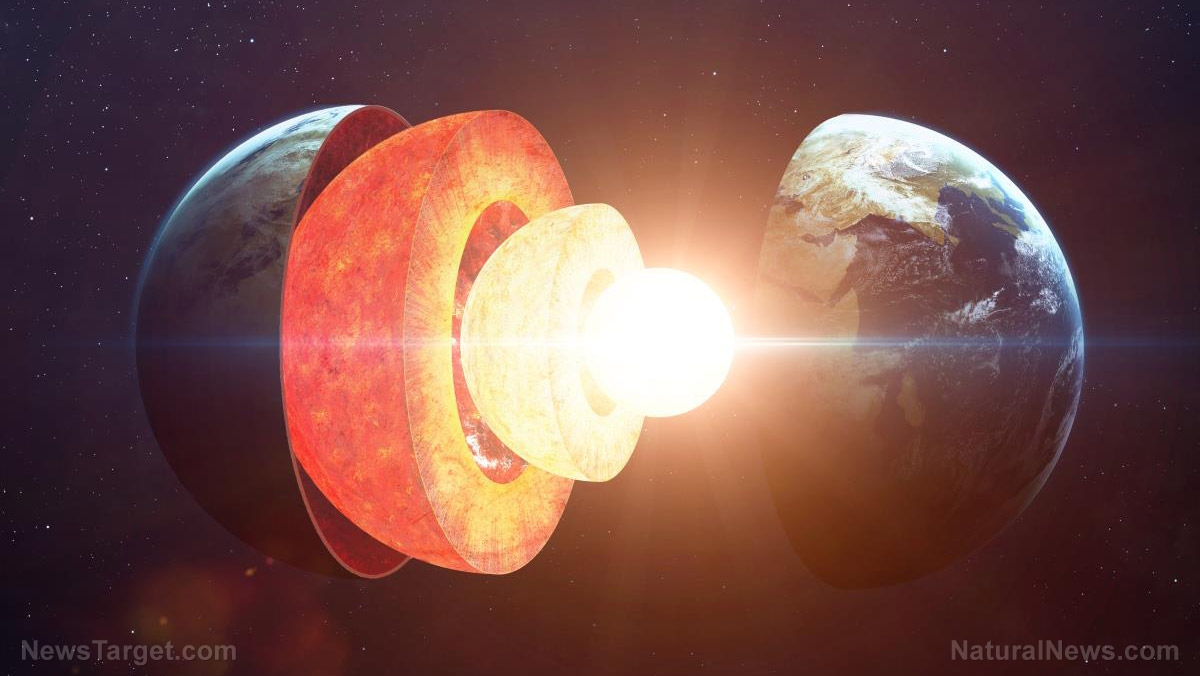Ice cores drilled in Antarctica, Greenland reveal scores of gigantic volcanic eruptions during Ice Age
03/24/2022 / By Kevin Hughes

Ice cores drilled in Antarctica and Greenland have shown colossal volcanic eruptions during the Ice Age, with many of them bigger than any eruption in modern history.
According to the University of Copenhagen physicists who were responsible for the research, these ancient eruptions “can teach us about our planet’s sensitivity to Earth change.”
For most people, the mention of a volcanic eruption evokes doomsday story lines that include roaring explosions, dark ash puffing up into the stratosphere and gooey lava covering everything in its way as terrified humans run for their lives.
While such an eruption could hypothetically happen any time, people have had to settle with disaster films and books when it comes to truly enormous volcanic eruptions in the modern age.
“We haven’t experienced any of history’s largest volcanic eruptions. We can see that now. Eyjafjellajökull, which paralyzed European air traffic in 2010, pales in comparison to the eruptions we identified further back in time. Many of these were larger than any eruption over the last 2,500 years,” said Anders Svensson of the University of Copenhagen‘s Niels Bohr Institute.
Svensson and his fellow researchers managed to evaluate the quantity and intensity of volcanic eruptions over the last 60,000 years by analyzing ice cores drilled in Antarctica and Greenland. Estimates of volcanic eruptions more than 2,500 years ago have been linked with great doubt and a lack of accuracy up to now.
Researchers identify 85 large global volcanic eruptions
The researchers were able to identify 85 of the volcanic eruptions as large global eruptions with 69 of them estimated to be bigger than the 1815 eruption of Mount Tambora in Indonesia, the largest volcanic eruption in recorded human history.
The Tambora eruption discharged so many sulfuric acid into the stratosphere that it blocked sunlight and caused global cooling in the following years. The eruption also brought tsunamis, drought, famine and no less than 80,000 deaths.
“To reconstruct ancient volcanic eruptions, ice cores offer a few advantages over other methods. Whenever a really large eruption occurs, sulfuric acid is ejected into the upper atmosphere, which is then distributed globally – including onto Greenland and Antarctica. We can estimate the size of an eruption by looking at the amount of sulfuric acid that has fallen,” Svensson explained.
In a prior study, the researchers managed to coordinate ice cores from Antarctica and Greenland to date the respective core layers on the same time scale. By doing this, they were able to compare sulfur residues in ice and understand when sulfuric acid spread to both poles after worldwide important eruptions.
“The new 60,000-year timeline of volcanic eruptions supplies us with better statistics than ever before. Now we can see that many more of these great eruptions occurred during the prehistoric Ice Age than in modern times. Because large eruptions are relatively rare, a long timeline is needed to know when they occur. That is what we now have,” said Svensson.
And people may now be wondering when the next of these gigantic eruptions will happen. Svensson isn’t ready to make any predictions.
“Three eruptions of the largest known category occurred during the entire period we studied, so-called VEI-8 eruptions. So, we can expect more at some point, but we just don’t know if that will be in a hundred or a few thousand years. Tambora-sized eruptions appear to erupt once or twice every thousand years, so the wait for that may be shorter,” said Svensson.
Powerful volcanic eruptions can change global climate
Powerful volcanic eruptions can change global climate as there is usually a five to 10-year cooling period that follows. For this reason, there is a great deal of interest in mapping the significant eruptions of the past since they can assist scientists to look into the future.
“Ice cores contain information about temperatures before and after the eruptions, which allows us to calculate the effect on climate. As large eruptions tell us a lot about how sensitive our planet is to changes in the climate system, they can be useful for climate predictions,” Svensson explained.
Deciding the Earth’s climate sensitivity is an Achilles’ heel of modern climate models.
“The current IPCC [Intergovernmental Panel on Climate Change] models do not have a firm grasp of climate sensitivity that is what the effect of a doubling of CO2 in the atmosphere will be. Vulcanism can supply us with answers as to how much temperature changes when Earth’s atmospheric radiation budget changes, whether due to CO2 or a blanket of sulfur particles. So, when we have estimated the effects of large volcanic eruptions on climate, we will be able to use the result to improve climate models,” Svensson said.
Overall, the researchers were able to identify 1,113 volcanic eruptions in Greenlandic ice cores and 740 eruptions in Antarctic ice cores over the last 60,000 years, where cores had sulfuric acid deposits higher than 20kg and 10kg per square kilometer, respectively
Eighty-five of the eruptions identified were discovered by researchers at both of Earth’s poles. Twenty-five of these were bigger than any eruption in the past 2,500 years. The latest study was published in the journal Climate of the Past.
Watch the video below to know about the cause of volcanic eruptions.
This video is from the InfoWars channel on Brighteon.com.
More related stories:
Volcanic activity in Antarctica responsible for changes in climate in the region; not global warming.
Volcanic eruption triggered worst mass extinction in Earth’s history – study.
Sources include:
Submit a correction >>
Tagged Under:
Antarctica, Climate, climate science, discoveries, Ecology, environment, Greenland, ice age, ice cores, natural disasters, real history, real investigations, research, Sulfuric acid, volcani eruptions
This article may contain statements that reflect the opinion of the author
RECENT NEWS & ARTICLES
COPYRIGHT © 2017 DISCOVERIES NEWS




















